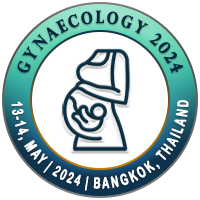
Sudhamani Chentratodi
Government Medical College, Kozhikode, IndiaTitle: Incidence and risk factors of post-molar gestational trophoblastic neoplasia: A prospective study
Abstract
Background: Gestational trophoblastic disease (GTD) is a group of disorders arising from abnormal trophoblastic cells. Gestational trophoblastic neoplasia (GTN) is a malignant counterpart of GTD. In the earlier era, morbidity and mortality associated with GTD was very high, 90-95% presenting with metastatic GTN in 1980’s.
Methods: This is a prospective study to analyze the incidence and to identify the risk factors of post-molar GTN and to evaluate the role of Beta-hCG level as a predictive factor of post-molar GTN, conducted in the department of Obstetrics and Gynecology, Institute of Maternal and Child Health (IMCH), Government Medical College, Kozhikode, on patients attending the vesicular mole(VM) clinic. Group A (remission group - was diagnosed after 6 months of follow-up with undetectable Beta-hCG values) and Group B (post-molar GTN). The two groups were compared for identifying risk factors.
Results: There were 79 cases of molar pregnancy registered in VM clinic with an incidence of 4.87/1000 deliveries. Of the 79 patients with GTD, 17 were diagnosed to have GTN during follow-up with an incidence of 21.51% of GTD. Incidence of post-molar GTN were significantly more among patients with history of previous molar pregnancy. The median Beta-hCG level at 2 weeks post-evacuation and the ratio of Beta-hCG levels at 1week to 2 weeks post-evacuation was found to be highly predictive of post-molar GTN.
Conclusions: Incidence of GTD was higher compared to international studies. The ratio of post-evacuation Beta-hCG at 1 week to Beta-hCG at 2 weeks is the most reliable predictor of post-molar GTN.
Biography
WILL BE UPDATED SOON

